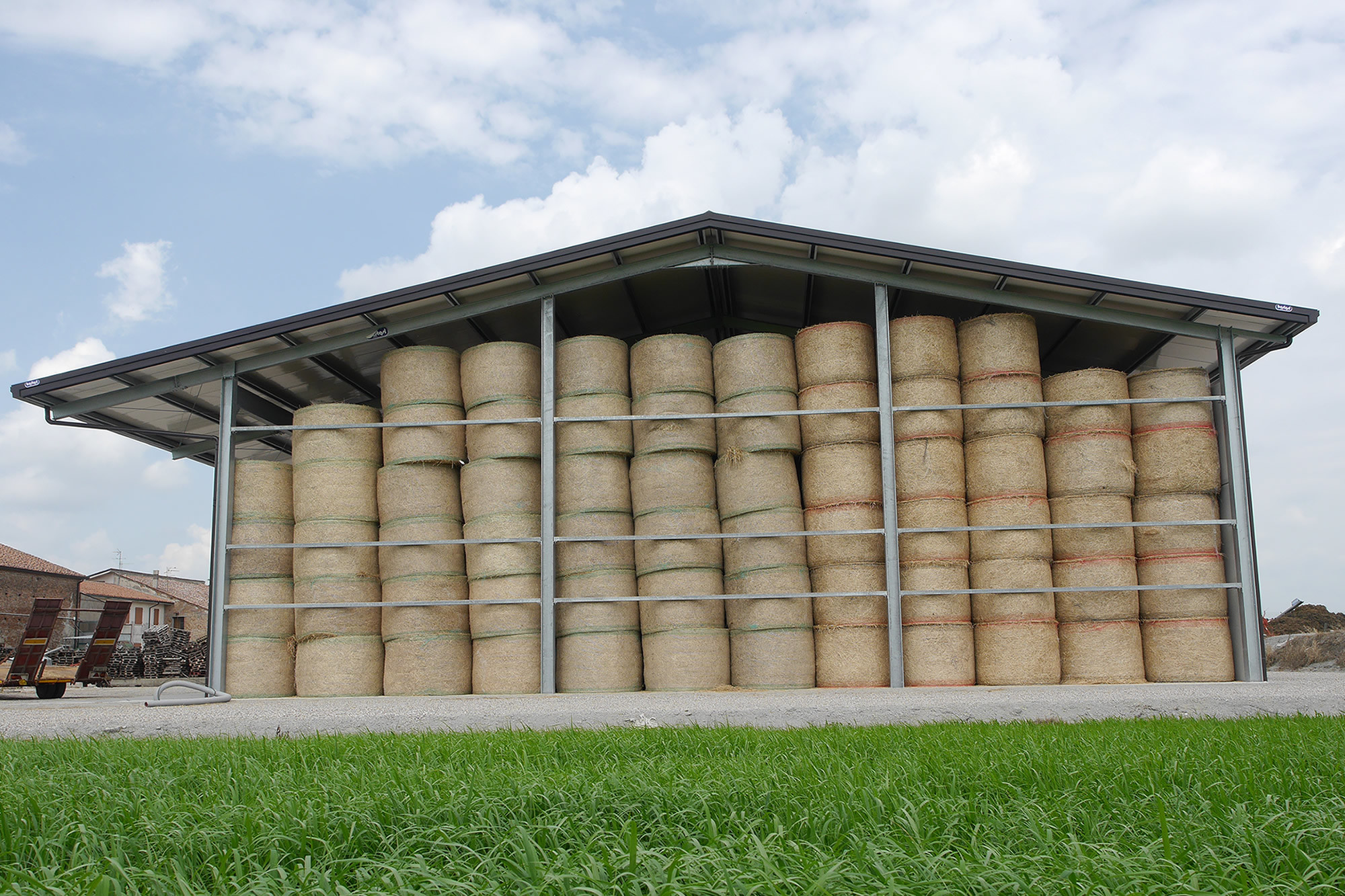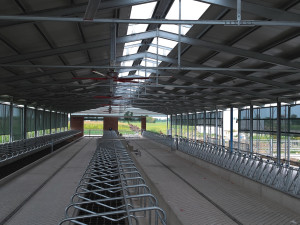Bales Storage
Modern techniques of haymaking have as a central characteristic of the bales produced with round baler. The technique of so-called big balers has a marginal share of the production chain since, compared with markedly higher costs Pick up balers machines , does not offer the advantages of cylindrical bales, which once produced can be left in the field for a relatively long time, even exposed to atmospheric precipitation, without that the product undergoes appreciable deterioration, thus allowing greater flexibility in the organization of work.
The hay, independently of method of packaging used (round or square bales) can be stored in different ways depending on availability and the type of storage. Bertasi is able to implement modern systems of storing, as what is seen in this realization recently. In fact, there are different types of deposit which are found on farms:
• deposits made with roofs free of any curtain wall;
• deposits with the curtain walls on three sides;
• deposits completely closed with curtain walls on all sides and presence of doors and windows;
• deposits of old construction (whether over the barn and on the ground) restored or converted to storage of baled hay;
• temporary storage of hay outdoors with top cover made of plastic material.
The availability or not of one type of deposit, influences the stacking modes that you can adopt and without a doubt affects the operational difficulties and risks that may arise. The deposits consisting of simple canopies are those that provide the most flexibility of use and do not exhibit particular limitations in the use of machines and / or in the realization of the stacks, except for the possible presence of some pillars in the center of the structure, especially in the case of canopies of considerable size.
It is placed inside them round bales or big balers placing them in columns side by side consist of a variable number of elements generally between 4 and 6. This structures made from Bertasi are usually made of prefabricated structures in reinforced concrete or steel; have pillars and overlying cover and there is no provision kind of perimetric infill wall. The flooring is generally realized in concrete but cannot exclude the presence of deposits that are the flooring dirt: the economical solution but without a doubt not recommended.
Generally they have one projection of the eaves very pronounced ( 2.50 to 3.00 m) as a function of the height of the canopy; that enables you to repair the forage from rainy weather events associated with the presence of strong wind intensity. Deposits with curtain walls on three sides do not differ substantially from the previous ones; the presence of the walls of tamponade side constitutes an element of improved forage protection from unfavorable meteorological events and safety for the stability of the stacks are stored.




